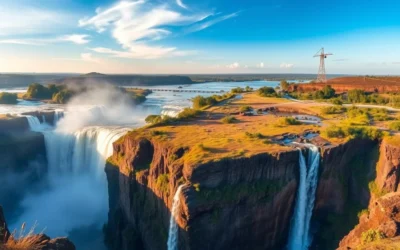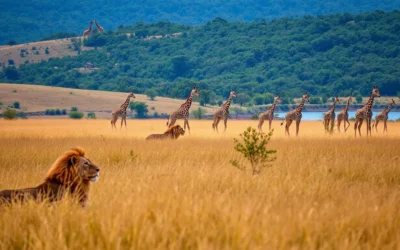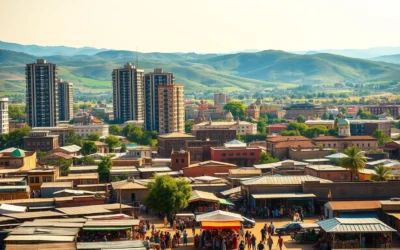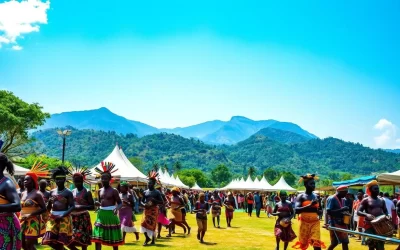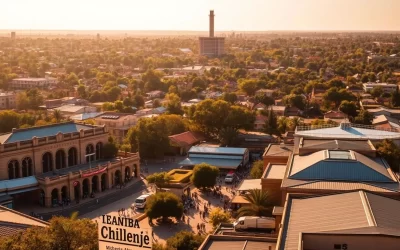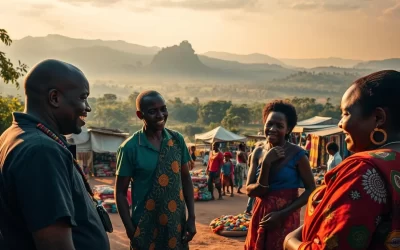✓ Accommodations✓ Flights✓ Rental Cars✓ Tours & Activities
Planning a trip to Zambia can be a daunting task, especially when it comes to deciding the best time to visit. Understanding the country’s distinct weather patterns is crucial to making the most of your safari experience.
The country experiences two main seasons: a dry season from May to October and a wet season from November to April. Each season offers unique wildlife viewing opportunities and breathtaking landscapes.
Your ideal time to visit will depend on what you want to see and do, whether it’s witnessing the migration of thousands of wildebeest or experiencing Victoria Falls at its most powerful. By understanding Zambia’s weather, you can make informed decisions about when to book your trip.
Understanding Zambia’s Seasons and Climate
To make the most of your Zambian adventure, it’s essential to grasp the country’s seasonal patterns. Zambia’s climate is characterized by two distinct seasons that dramatically transform the landscape and wildlife behavior throughout the year.
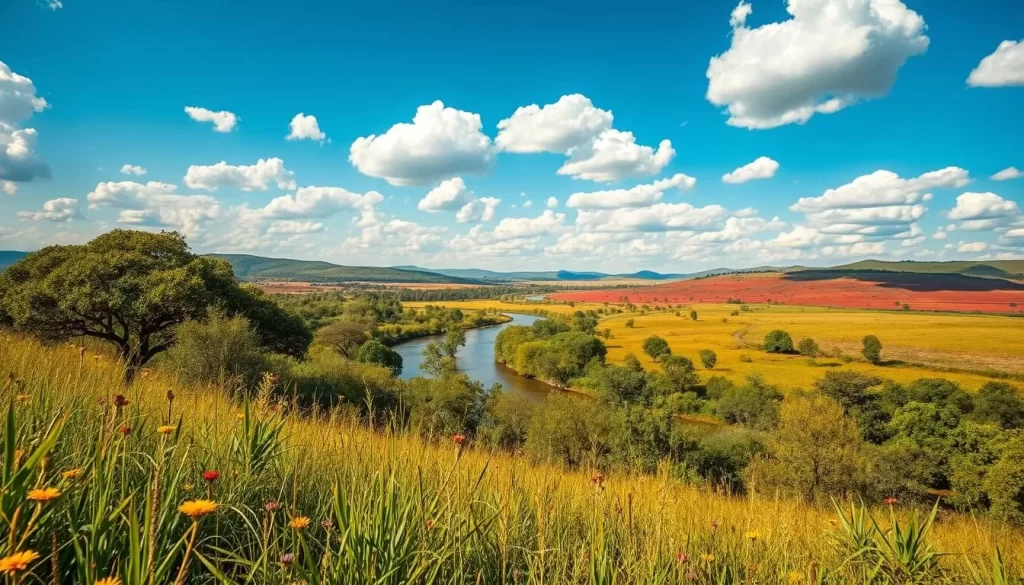
The Dry Season: May to October
During the dry season, you’ll experience clear skies, virtually no rainfall, and progressively cooler temperatures, especially in June and July when nighttime temperatures can drop significantly. As the dry season progresses, vegetation thins out and water sources become scarce, forcing wildlife to congregate around permanent rivers and waterholes, making game viewing increasingly productive.
The Wet Season: November to April
The wet season brings dramatic afternoon thunderstorms, higher humidity, and lush, green landscapes that earn this period the nickname “emerald season.” While some remote areas and parks become inaccessible during the height of the rainy season, the wet months offer unique advantages, including fewer tourists, lower rates, spectacular bird watching, and beautiful photography opportunities with dramatic skies and verdant scenery.
| Season | Months | Characteristics | Best For |
|---|---|---|---|
| Dry Season | May to October | Little to no rainfall, cooler temperatures, scarce water sources | Game viewing, wildlife watching |
| Wet Season | November to April | Dramatic thunderstorms, higher humidity, lush landscapes | Bird watching, photography, fewer tourists |
Zambia: Best Months for a Weather-Savvy Trip
Discover the best time to visit Zambia for an optimal safari experience. Understanding the seasonal variations is key to making the most of your trip. Zambia’s climate significantly influences the quality of your safari adventure, with different times of the year offering unique experiences.
Peak Season: July to October
The peak season in Zambia, from July to October, is considered the best time for a safari. During these months, the dry conditions create ideal circumstances for game viewing across all national parks. As water sources dry up, wildlife congregates around the remaining waterholes, making it easier to spot a variety of animals.
August and September are particularly outstanding for game viewing as the scarcity of water makes wildlife more concentrated. However, it’s also the busiest time, with higher prices and more visitors at popular destinations. By October, temperatures can soar, sometimes reaching above 104°F (40°C).
- The dry season enhances the visibility of wildlife.
- Concentration of animals around water sources simplifies spotting.
- It’s the busiest and most expensive time to visit.
Shoulder Season: May to June
The shoulder season, which includes May and June, offers a great balance between good game viewing conditions and more favorable prices. Many lodges offer lower rates before the peak season begins, making it an attractive time for travelers looking for value.
May is particularly beautiful as the landscape still retains some greenery from the rainy season, and the clear skies provide excellent conditions for spotting wildlife. As the dry season sets in, game viewing opportunities improve, making it an ideal time to visit Zambia.
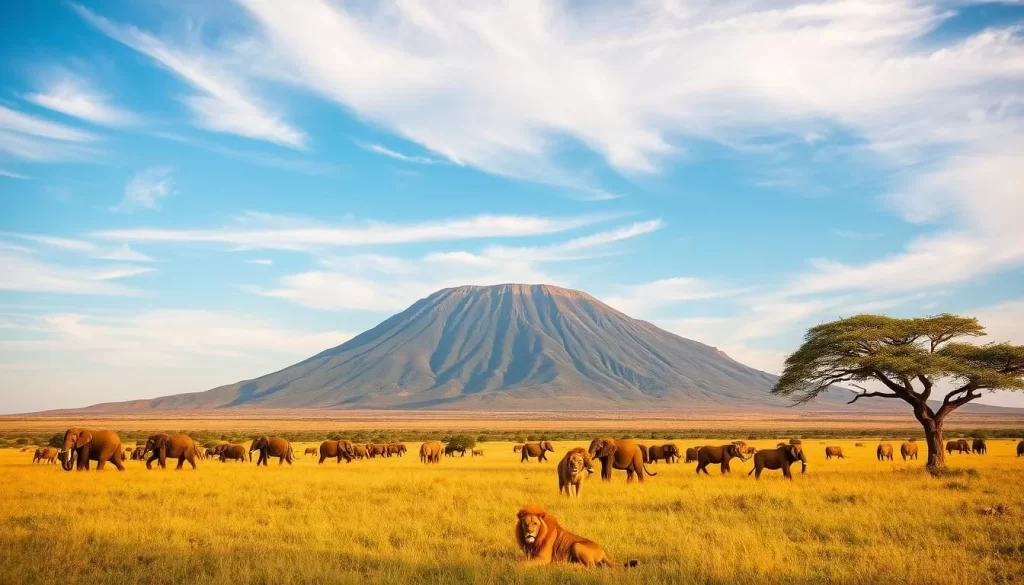
Visiting Zambia During the Green Season: November to April
The green season in Zambia, spanning from November to April, offers a distinct perspective on the country’s natural beauty. This period is characterized by heavy rainfall, especially from January to March, which transforms the landscape into a lush paradise.

Advantages of Low Season Travel
Traveling to Zambia during the green season has its advantages. You’ll encounter significantly fewer tourists at the camps that remain open, allowing for a more personalized experience. The lush greenery and dramatic skies create a picturesque backdrop for your safari adventures.
The green season is also an excellent time for bird watching, as migratory species arrive, bringing Zambia’s bird count to over 750 species. Many birds are in their colorful breeding plumage, making this period a paradise for bird enthusiasts.
- Substantial discounts at many lodges, sometimes up to 40% off peak season rates
- More personalized service with fewer guests competing for attention
- Exceptional bird watching opportunities with migratory species arriving
Weather Challenges and Considerations
While the green season has its advantages, it’s essential to be aware of the weather challenges. Regular afternoon thunderstorms, high humidity, and potential flooding can make some roads impassable and cause certain camps to close completely.
January through March sees the heaviest rainfall, with some areas receiving up to 20 inches (500mm) of rain per month. This can make travel to remote areas difficult, but rewarding for those seeking authentic, uncrowded experiences.
Be prepared for the challenges that come with traveling during the green season. With proper planning and flexibility, you can have a unique and enriching experience in Zambia.
Best Time for Wildlife Viewing in Zambia
Zambia offers some of the best wildlife viewing experiences in Africa, with the dry season being the prime time for game viewing. The country’s national parks are teeming with a diverse array of animals, making it a top destination for safari enthusiasts.
Prime Game Viewing Months
The prime months for wildlife viewing in Zambia are from late June through October. During this period, the dry conditions force animals to congregate around rivers, lagoons, and permanent water holes, making it easier to spot them. You’ll have the best chance of witnessing game interactions as predators like lions and leopards take advantage of prey animals’ predictable movements to water sources.
Each of Zambia’s national parks offers unique wildlife viewing opportunities. For example, South Luangwa is renowned for its leopards, while Lower Zambezi is known for its elephant and buffalo herds. Kafue National Park, on the other hand, boasts a diversity of antelope species, including the rare roan and sable.
Special Wildlife Events and Migrations
One of Zambia’s most spectacular wildlife events occurs in November at Liuwa Plain National Park, where Africa’s second-largest wildebeest migration brings approximately 40,000 blue wildebeest across the plains. This event is a must-see for any safari enthusiast. Additionally, consider timing your visit to coincide with other special events like the fruit bat migration in Kasanka National Park (November) or the gathering of thousands of storks in the Bangweulu Wetlands (March-April).
By planning your visit during the best time of year for wildlife viewing, you can experience the full richness of Zambia’s animals and ecosystems.
Month-by-Month Guide to Zambia’s Weather
Zambia experiences a diverse range of weather conditions across different months. Understanding these variations is key to planning a successful and enjoyable trip.
January to March: Peak Rainy Season
During these months, Zambia is at the peak of its rainy season, characterized by heavy rainfall and frequent thunderstorms. The temperatures range from 77°F to 86°F (25°C to 30°C), creating lush landscapes but also challenging travel conditions due to flooded roads. Many remote camps close during this period, but those that remain open offer exceptional bird watching opportunities and the chance to see newborn animals as many species give birth during this time.
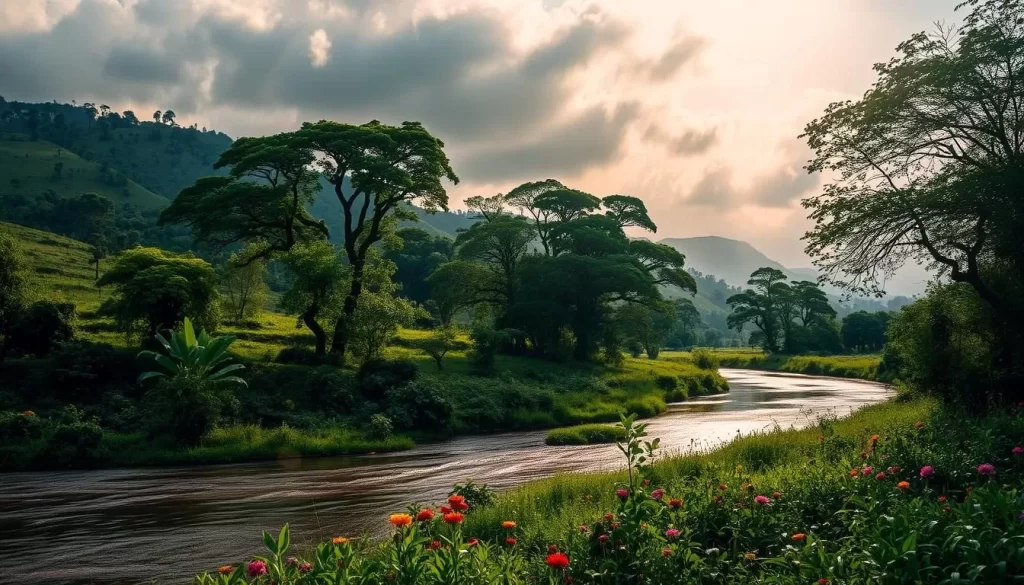
April to June: Transition Period
As the rainy season subsides, April to June marks a beautiful transition period in Zambia. The landscape gradually shifts from vibrant green to golden hues, and temperatures become more moderate. By May, morning game drives might require warm clothing as temperatures can drop to around 50°F (10°C) before sunrise, though daytime temperatures remain pleasant at around 75°F to 80°F (24°C to 27°C).
July to October: Dry Season Peak
This period represents the height of the dry season in Zambia, with virtually no rainfall and increasingly sparse vegetation. Temperatures start comfortably cool in July but climb dramatically by October, with daytime highs reaching over 100°F (38°C). This is an excellent time for game viewing as animals congregate around water sources, making them easier to spot on safari.
By understanding these monthly weather patterns, you can better plan your trip to Zambia, whether you’re looking for a safari adventure or simply wanting to enjoy the country’s natural beauty. Each month offers unique experiences, from the lush landscapes of the rainy season to the wildlife viewing opportunities of the dry season.
Exploring Zambia’s National Parks: Seasonal Considerations
Zambia is home to some of Africa’s most renowned national parks, each with its unique seasonal characteristics that can greatly impact your safari adventure. Understanding these seasonal variations is key to planning an unforgettable trip.
South Luangwa National Park
South Luangwa National Park, known as the birthplace of the walking safari, offers the most reliable year-round wildlife viewing in Zambia. Some camps remain open even during the rainy season, allowing for a more intimate connection with nature. The Luangwa Valley experiences dramatic seasonal changes, with the Luangwa River fluctuating significantly between the dry and wet seasons. During the dry season, the river reduces to pools, making it easier to spot wildlife. In contrast, the wet season brings extensive flooding, which can be both a challenge and an opportunity for unique safari experiences.
Lower Zambezi National Park
Lower Zambezi National Park typically closes from November to April due to flooding caused by the rising Zambezi River. When it reopens in May, you’ll find a pristine wilderness with abundant wildlife, including large elephant herds, buffalo, and exceptional predator sightings along the riverfront. The dry season offers ideal conditions for safari activities, making it a prime time to visit.
Kafue National Park
Kafue National Park, Zambia’s largest and most diverse park, offers unique ecosystems, including the Busanga Plains. These plains transform from accessible savannah during the dry months to a flooded paradise for water-loving species during the wet season. While the rainy season can make navigation challenging, the dry season provides excellent opportunities for spotting a wide range of wildlife.
| National Park | Best Season to Visit | Notable Features |
|---|---|---|
| South Luangwa | Year-round, but dry season is best for spotting wildlife | Walking safaris, Luangwa River |
| Lower Zambezi | May to October | Elephant herds, buffalo, predators along the Zambezi River |
| Kafue | Dry season for diverse wildlife viewing | Busanga Plains, diverse ecosystems |
Victoria Falls: When to Experience Its Different Moods
Victoria Falls is a natural wonder that changes dramatically throughout the year, offering a unique experience depending on when you visit. The falls’ character transforms with the season, presenting a different spectacle each time you visit Zambia.
High Water Season: February to June
During the high water season, from February to June, Victoria Falls is at its most powerful. The peak flow usually occurs in April and May when over 500 million liters of water cascade over the edge every minute. The massive spray cloud created during this time can rise 1,300 feet into the air and be visible from 30 miles away. However, the spray often limits visibility of the falls themselves.
Low Water Season: August to January
In contrast, the low water season, from August to January, offers clearer views of the geological features and rock face as the Zambezi River’s flow decreases. Certain activities, such as swimming in Devil’s Pool, are only possible during this time when water levels are low enough. The best time to visit Victoria Falls depends on your preferences: for a more dramatic display, visit during the high water season, or for clearer views and specific activities, plan your trip during the low water season.
Understanding the different seasons and their impact on Victoria Falls helps you plan your trip to Zambia for the best experience. Whether you’re looking for the raw power of the falls during the high water season or the clearer views and unique activities of the low water season, timing your visit according to your interests is key.
Planning Your Zambia Trip by Activity
Whether you’re interested in walking safaris, bird watching, or river activities, Zambia has something to offer year-round, but timing is everything. The country’s diverse climate and geography mean that different activities are best enjoyed during specific times of the year.
Best Months for Walking Safaris
Walking safaris are a signature Zambian experience, pioneered in the Luangwa Valley. They are best enjoyed during the dry months from June to October when trails are firm, visibility through vegetation is good, and wildlife concentrates near water sources. May and June offer particularly pleasant temperatures, while September and October provide the most intense wildlife encounters.
Optimal Time for Bird Watching
For bird enthusiasts, the optimal time to visit Zambia is during the wet season (November to April) when over 400 migratory species arrive, bringing the country’s bird count to more than 750 species in their breeding plumage. This period offers a unique opportunity to see a wide variety of birds.
River Activities and Water-Based Safaris
River activities and water-based safaris are most rewarding from July to October when animals regularly visit the Zambezi and Luangwa rivers. This allows you to observe wildlife from the unique vantage point of a canoe or boat. Fishing enthusiasts should also time their trip according to their target species.
By planning your trip according to your preferred activities, you can make the most of your time in Zambia and enjoy a more fulfilling experience.
Conclusion: Making the Most of Your Zambia Adventure
To make the most of your Zambian adventure, it’s essential to consider the country’s seasonal variations and plan accordingly. Understanding how the different seasons affect various parts of Zambia will help you set appropriate expectations and enjoy your trip to the fullest.
Combining destinations within Zambia that complement each other seasonally can enhance your travel experience. For instance, you could start in South Luangwa for excellent wildlife viewing and then head to Victoria Falls when it’s at its optimal flow. This approach allows you to experience the best of Zambia’s diverse offerings.
Booking your safari in advance is crucial, especially during peak season (July-October), when popular camps fill up quickly. In contrast, the green season may offer last-minute deals. Remaining flexible with your travel dates can also be beneficial, as the start and end of seasons can vary significantly from year to year.
Working with a knowledgeable travel specialist is the best way to ensure your trip aligns with your interests, whether that’s photography, bird watching, or general game viewing. With the right guidance, you can have a truly unforgettable Zambian adventure.
The above is subject to change.
Check back often to TRAVEL.COM for the latest travel tips and deals.

